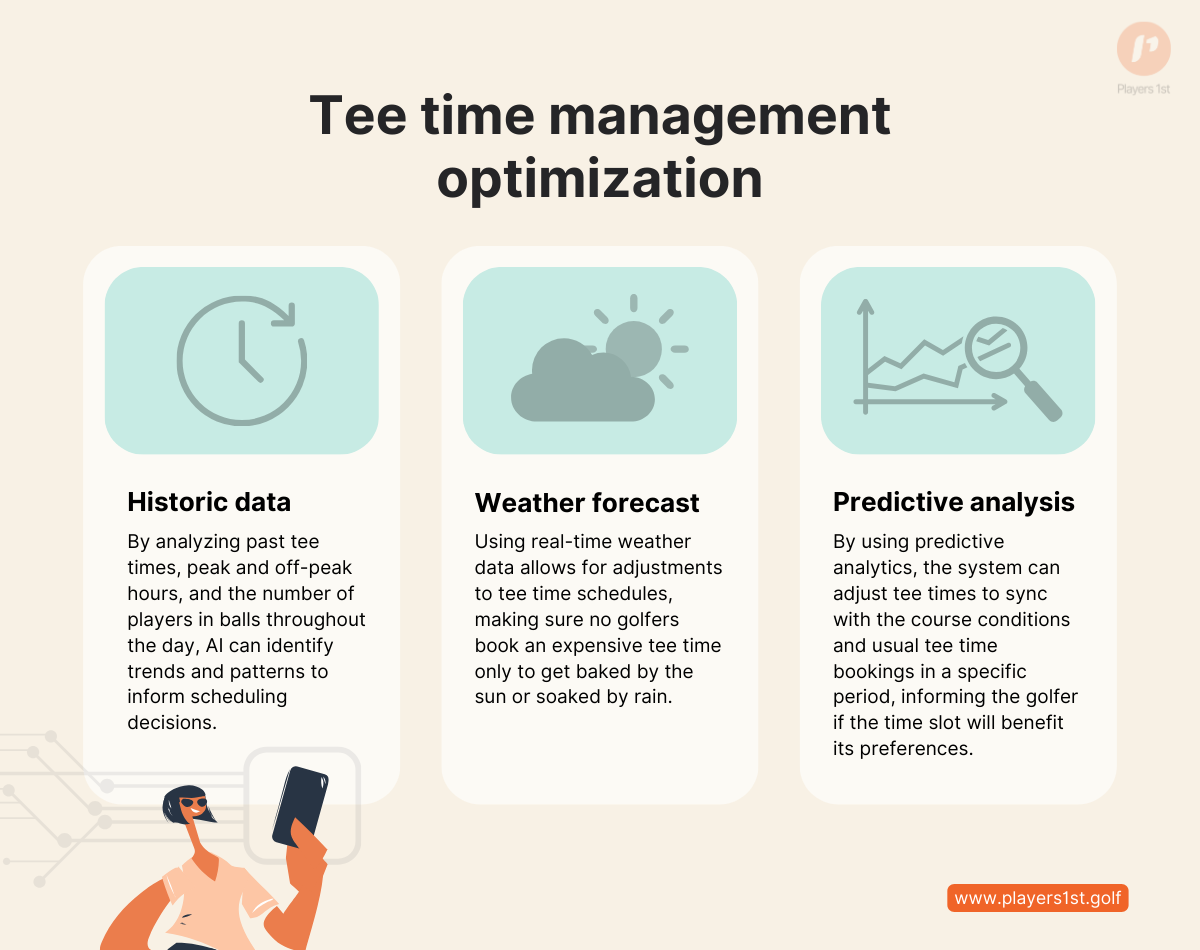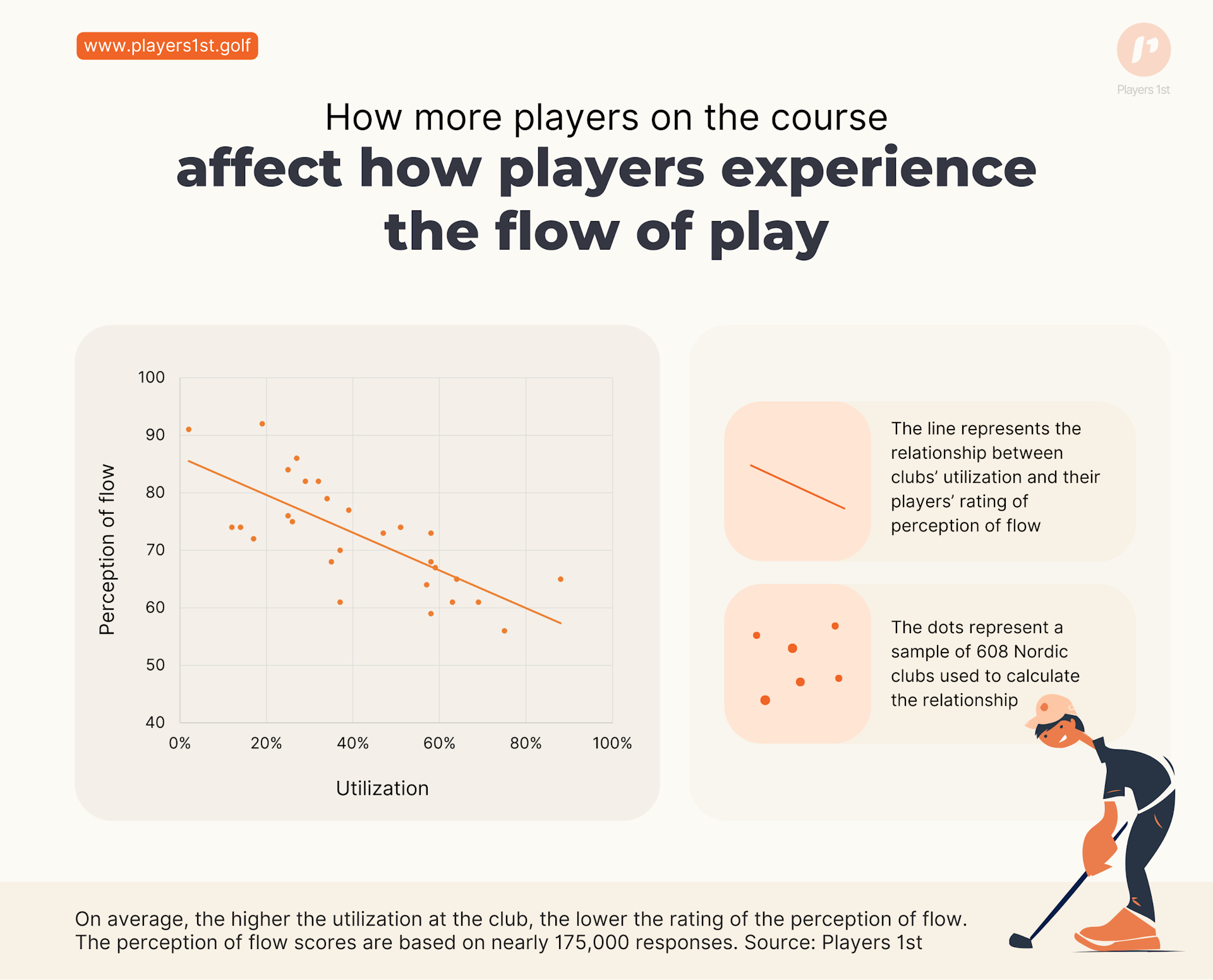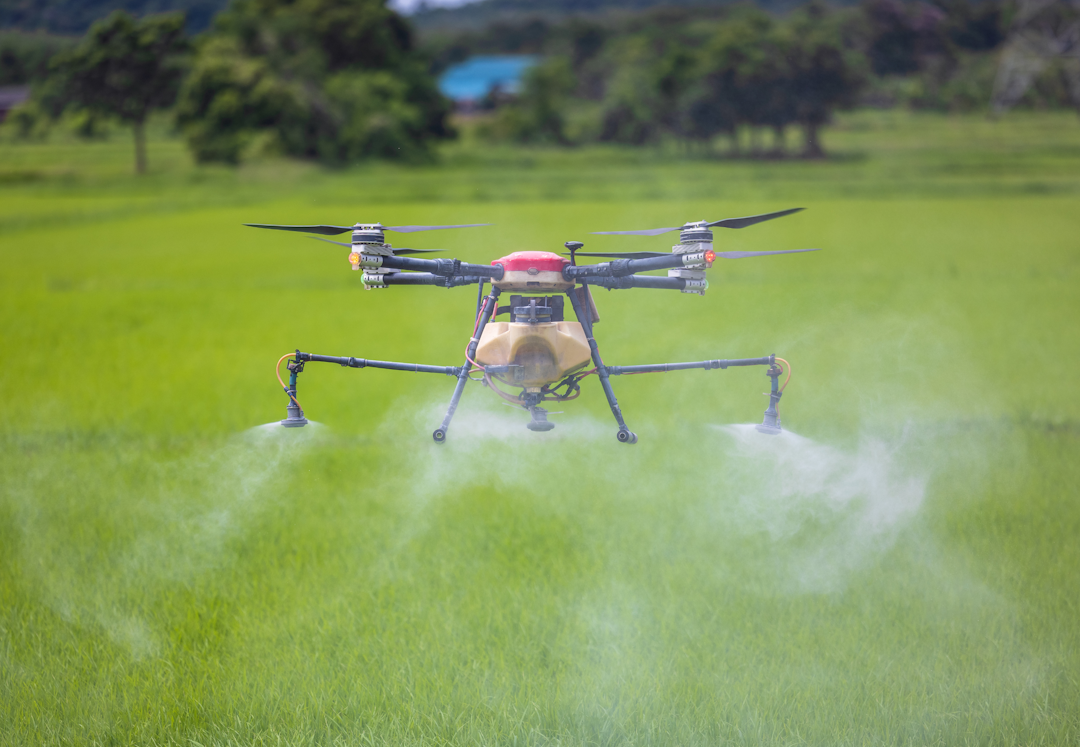Tee time mastery: Elevating golf experiences with AI optimization
Artificial Intelligence rules the tee time world, allowing clubs to squeeze in as many golfers on the course as possible thanks to algorithms. The high-tech tool uses a lot of stats to maximize the number of players. But data shows that a too high utilization of the course might ruin the golfers' experience.

Back in the days, the administrative staff had to fill out tee sheets by hand whenever golfers reached out to book a round. We're talking about a time-consuming process, including the risk of human errors. Not to mention the trouble of storing and manually analyzing the track records of booked tee times in the hope of predicting when busy times would strike.
How could there possibly be time to even think about optimizing tee times in that process?
As with many other things in the modern world, Artificial Intelligence (AI) has a solution to every single problem. Now, the smart technology is ready to boost tee time management in a whole new way.
Embracing this to optimize utilization will take you far – as long as you promise to remember your golfers. Otherwise, cranking up the number of players on the course can slice your revenue in the long run.
Revolutionizing tee time management
At the core of AI and its optimization process lies a set of algorithms, and if you want to maximize tee time bookings, it all comes down to the data you train the algorithms with.
The inputs can be anything and differ from what you want the technology to do. Below, you'll see some of the typical ones used for optimization.
In short, AI is the go-to tool to inform you on how to reach the highest usage of your course. By taking objective data into account, the technology can show you how to get as many golfers through as possible to increase your revenue – well, sort of.
More bookings do not necessarily equal better revenue
Alright, getting as many tee time slots booked as possible with AI sounds great. But let's zoom in on what will happen to the golfer's experience if you go for as high of a utilization imaginable without tweaking on other things.
The graph below shows data on more than 600 Nordic golf clubs, revealing how golfers rate the flow on the course and how high the utilization rate is at the club.
The graph has a clear and perhaps obvious message: the more players you push through the course, the higher the risk of players waiting in a golf traffic jam. And when the players rate the pace of play to be poor, the records say their satisfaction with their overall experience drops – and the same does the Net Promoter Score.
Suddenly, the money earned by more bookings loses its value over time. A booking for a too crowded course can turn a player into a detractor. A detractor tells people to stay away from the course. And their next booking, you ask? It'll probably be somewhere else.
Of course, a high perception of the pace of play is useless if the utilization is rock bottom – and the other way around. And this actually leaves us at the beginning. It is not about maximizing utilization with AI. The trick is to optimize utilization with AI if you are going for long-term revenue.
Use AI to figure out what the golfers prefer in their tee times
First, it is notable that some clubs included in our data sample have cracked the code, getting a lot of golfers on the course and still ensuring the flow on the course is on point. And this is where AI can become very handy for other clubs that fancy the same outcome.
Some of the results can be due to the clubs being able to take especially players' characteristics into their tee time management, which actually also is great to keep in mind when it comes to increasing membership fees.
Other things could be peak hours, the number of people in the ball, or playing handicaps (HCP) – the factors are endless. Combining statistics with data about golfer's experience, the AI algorithm can start calculating the top utilization while keeping golfers happy at the same time.
But we know. Getting hands on this information is not possible for all golf clubs. But the more data you have on the type of golfers playing at specific times at your golf club, AI can assist you in increasing revenue during peak hours and reducing wastage during off-peak times.
And tee time management systems are already using algorithms to do so. One of the examples of this is dynamic pricing. By adjusting prices based on demand, time of day, seasonality, past popularity of the tee time, and weather forecast, the software adjusts prices to match what golfers are willing to pay during those specific times and under certain circumstances.
Something is telling us that this is just the beginning. Surely, when AI gets more data on general stats and golfers' overall experience and characteristics like gender, HCP, and age, a new world of optimizing tee time management will see the daylight.
Other stories
Night golf is lighting up the course - but what is it all about?
Virtual Reality opens digital doors for golfers to explore
How AI can help improve the future of golf lessons
Drones, robots, and AI shape a green future with fewer chemicals on courses
AI-driven irrigation increases sustainability and cut expenses
This can make or break job satisfaction among golf pros
What greenkeepers value most in their jobs
Paying more when playing more might be the future of memberships
Shorter rounds keep female golfers on your fairways
Golfers have spoken: We want rounds with fewer holes
Half of the members play just 5% of all rounds: Do they get value for money?
Effective course maintenance communication equals happy guests
The sweet spot: Finding the best scale of membership fee increases
Raise the fee with no fear if your members are satisfied
Where is golf headed in 2023?
Let us ping your mailbox
Boost your club’s member and guest experience to stay ahead of the game! Unlock expert insights, pro tips, inspiring club success stories, and more…
















